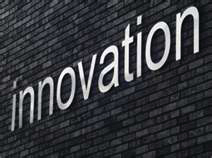Advisory
Why and How: A Strategy for Innovation
Over the last two to three years we have watched pundits and consultants promote ideas around emerging technologies. Some of the claims are ludicrous, loony, and ill-informed. Others are trying to position, parlay and learn. You’ve seen this column ...
Feb. 13, 2018

From the February 2018 Issue
Many of you have followed this column for years, and that loyalty is certainly appreciated. Choosing a monthly topic of interest, innovation and opportunity related to accounting and technology that you may not have considered can be a challenge. We may be entering a time of great opportunity that will certainly be a tipping point for the profession and many of our clients in various industries.
Over the last two to three years we have watched pundits and consultants promote ideas around emerging technologies. Some of the claims are ludicrous, loony, and ill-informed. Others are trying to position, parlay and learn. You’ve seen this column written as a series of best practices, as a strategic and tactical planning series and alsol as direct solutions for areas like collaborative accounting, payroll, 1040 workpapers, workflow, portals, audit automation and wealth management. After much consideration, this year will be a series of articles helping you understand the why and how of technologies, mainly focusing on the emerging technologies that are far enough along that they work and provide a business opportunity.
Year of the Bird and Canaries
Many of you like to read, as do I, and in the January edition of National Geographic magazine, they declared 2018 “The Year of the Bird,” marking the 100th anniversary of the Migratory Bird Treaty Act. I had forgotten a quote from Thomas Lovejoy, a Biologist and Godfather of Biodiversity: “If you take care of birds, you take care of most of the environmental problems in the world.” Many of us do recall the concept and use of canaries in coal mines to detect carbon monoxide and other toxic gases before they hurt humans. This practice was continued from 1911 until December 30, 1986 according to Kat Eschner in a Smithsonian article entitled “The Story of the Real Canary in the Coal Mine” from December 30, 2016.
We continue our shift from large mainframe to personal computer to network to mobile computer to cloud computing, adding more capabilities with each new technology. We don’t tend to retire too many technologies. Some do finally disappear, such as mimeograph, when it is clear they are no longer cheaper, faster or better than any other method. When was the last time you received or sent a fax? Is there a need for fax? Do you still send or receive faxes? The technology is not quite defunct, but you can see it is close. Consider 8”, 5.25” or 3.5” floppies. Do you still use any of these? The technology canaries are beginning to tell me that things that are familiary to us are getting ready to disappear.
So, What’s the Format and Goal?
Although my columns won’t always be of the same format, for the foreseeable future, my intent is to present each technology explaining the why and the how. Further, if a current technology is threatened or could be supplanted or replaced with a new technology, I’ll provide that warning, too. The goal is to make you aware of the opportunity, not claim that you are behind or negligent if you still rely on the technology being covered.
Many of the technologies will be new to all of us, but if it is not clear that the technology works, it won’t be covered. If there is a business case that can help your firm and your clients, I’ll do my best to find examples of the emerging technology that works. I’ll be trying to build a cookbook with lots of recipes of the whys, hows, and pitfalls/risks to avoid. Historically, I have done that with all significant technologies including networks, Windows, Microsoft Office and more. I have not seen a time when so many technologies are presenting so many opportunities to so few people. I cwant you to be included. Although a typical column will have more detail, note the abbreviated example below of recently introduced archival, thermal, color printing.
|
Key Information |
Technology: Inkless printing |
|
Why is the new technology better? |
Convenient, Conveys more information, Ability to have a printed image almost immediately |
|
How can you do this today? |
|
|
Risks |
High costs, small size format |
|
Where/When to use |
Work with clients to have photographs produced on demand |
|
How Much? |
Typically, less than $500 for the device, and $0.50 per photo |
|
Displaced technology or service |
Photo printing service |
|
Other resources |
Now, picture the topic changing from Inkless printing to: Blockchain, Machine Learning, Artificial Intelligence, Cryptocurrency, Robotic accounting, Big Data and other technologies directly affecting the practice of accounting. This strategy won’t leave out other important technologies when they are ready for consideration including self-driving cars, 3D printing, augmented reality, and virtual reality.
And yes, I’ll have plenty of room for tax, audit, collaborative accounting, business advisory tools, wealth management, practice management, business development and the tools that support them including paperless, workflow, portals and productivity software when there are key breakthroughs that need to be covered.
I’ll look to simplify the very complex emerging technologies into a formula you can consider and use. My canaries tell me it is time to look for more oxygen in the world of technology. It is time to look for new sandboxes to play in, complexity needs to be reduced and that less may be more. Stay tuned.
